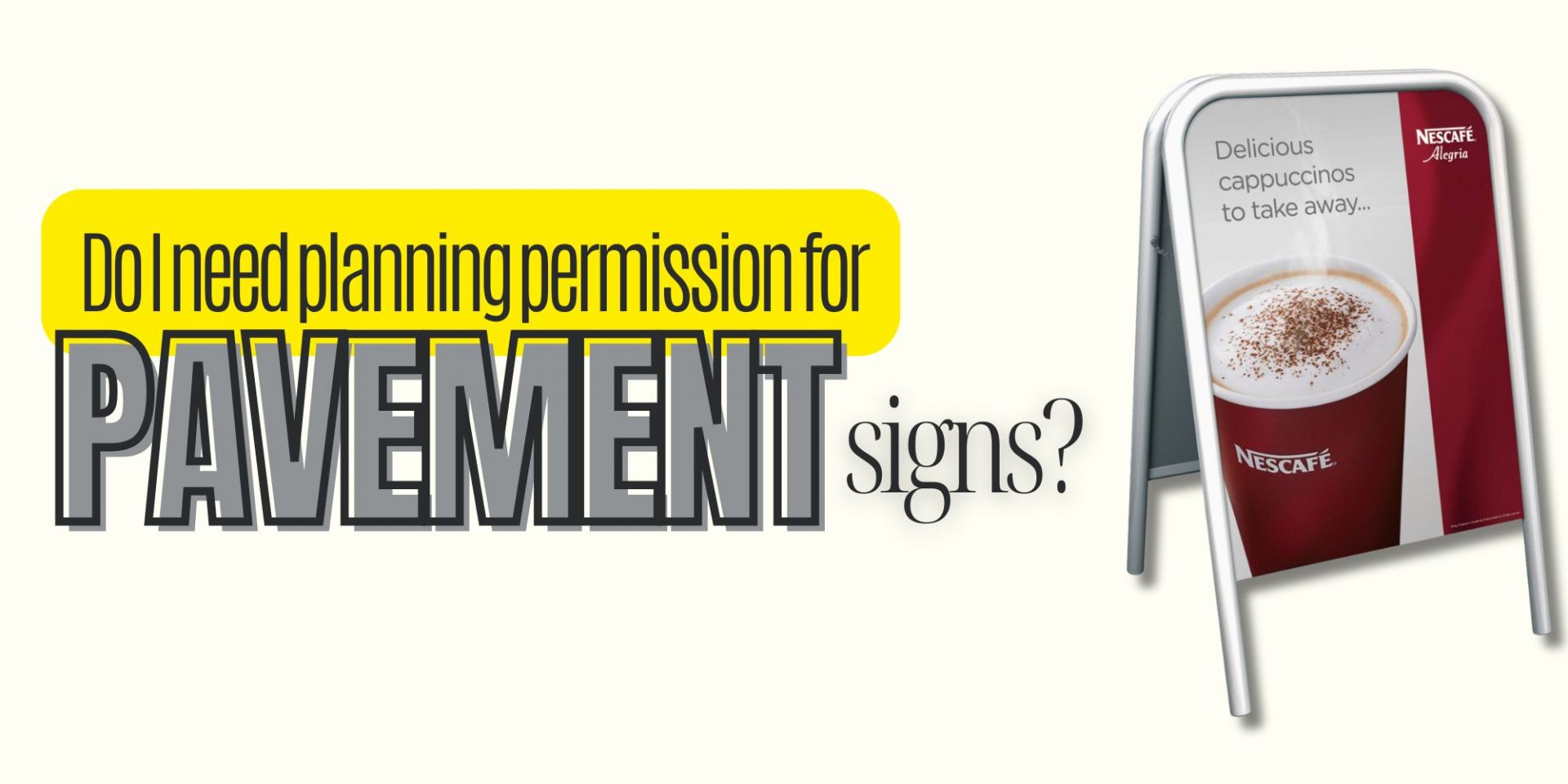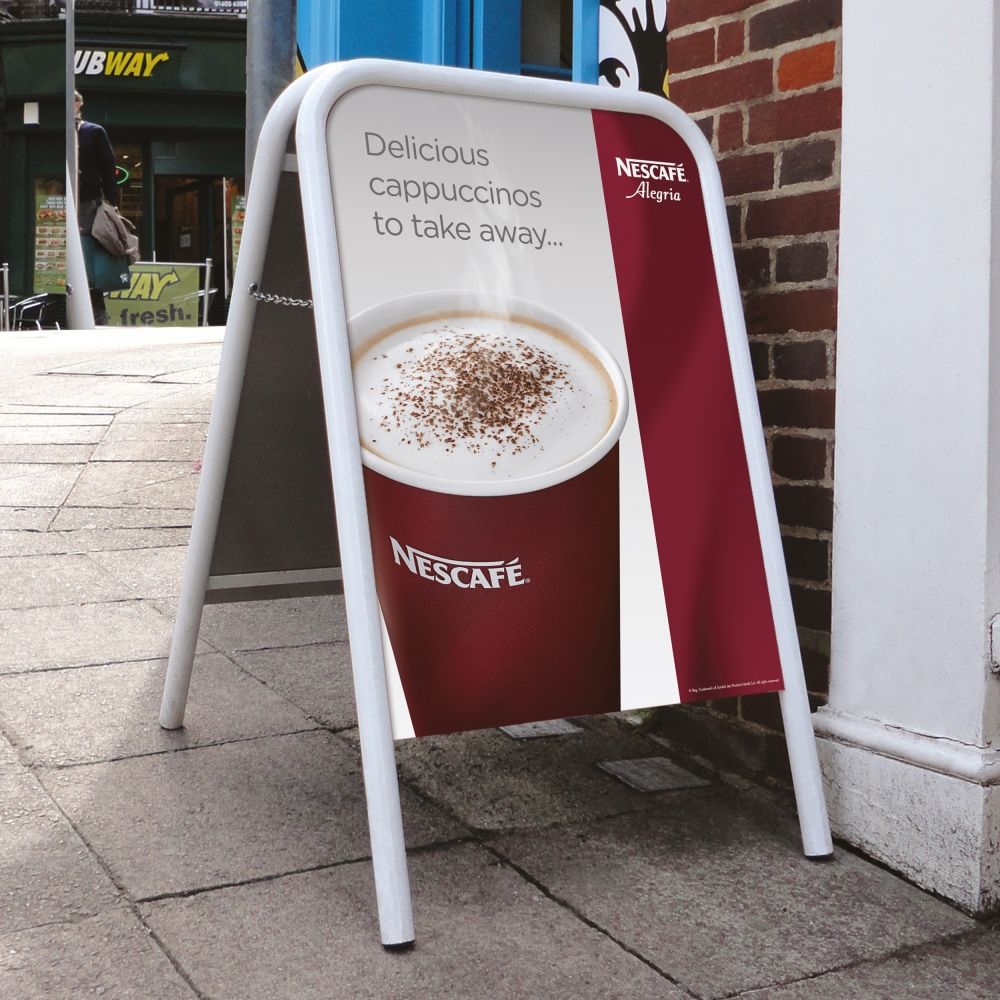
Understanding Pavement Signs and Their Types
Pavement signs come in a variety of forms, including A-boards, swing signs, illuminated signs, flags, and forecourt signs. Each type may be subject to different local council rules, so identifying the specific type of sign you intend to use is essential. Temporary signs, like A-boards, often fall under permitted development, meaning they don’t always require formal planning permission. However, permanent installations or those in sensitive locations may require additional approvals.
Classic A-Board
Do You Need Planning Permission?
There’s no one-size-fits-all answer to this question. The need for planning permission or a licence depends on a range of factors, including your location and how the sign will be used.Licences:
In many areas, businesses are required to obtain a pavement licence to display signs on public pathways. Applications can usually be completed online, and your local council will determine whether the proposed sign complies with their guidelines.Permissions:
Some councils only require written permission, especially for signs placed on private forecourts. Be sure to check with your local planning authority for specific requirements.
Key Regulations to Consider
Local councils typically enforce the following rules for pavement signs, although regulations may vary:- Signs must be at least 2 metres away from other signs, bus stops, or pedestrian crossings.
- Only one sign is allowed per business premises.
- Signs must be within 0.8 metres of the business’s frontage and leave at least 1.8 metres of space for pedestrians.
- Signs should only be displayed during business hours. Additional considerations include the size and design of the sign, its impact on public safety, and whether it fits within the local area’s aesthetic, particularly in heritage or conservation zones.

Swinger 4000 Panel Pavement Sign
Five Standard Conditions for Pavement Signs
To maintain safety and professionalism, businesses must adhere to these five common conditions when using pavement signs:Cleanliness:
Signs must be kept clean and visually appealing.Safety:
Signs should be stable and free from hazards.Permission:
Businesses need the consent of the landowner or Highway Authority if the sign is on public land.Visibility:
Signs should not obstruct or obscure official road, rail, or transport signs, nor should they create hazards.Removal on Request:
Councils can require the removal of signs that fail to comply.
Planning Permission Application Process
If planning permission is required, you’ll need to submit an application to your local council. The process typically involves providing detailed information about the sign, including its dimensions, materials, and proposed location. Be prepared for associated fees and a potential waiting period, so it’s wise to start early to avoid delays.Ensuring Compliance and Safety
Once your pavement sign is installed, ensure it remains in good condition and adheres to any conditions set by the local authority. Public liability insurance is a prudent investment, as it protects your business in the unlikely event of an accident caused by your signage. In some cases, councils may even require proof of insurance before granting approval.Stay Compliant, Reap the Rewards
Pavement signs are a powerful and traditional advertising method that can transform foot traffic into loyal customers. Understanding and adhering to local council rules ensures your business benefits from this effective tool while maintaining a positive relationship with the community.Whether you choose an A-board, swing sign, or alternative advertising solution, don’t forget to consult your local council and review their guidelines. When used correctly, your sign can drive sales and enhance your business’s visibility, all while staying compliant with the law.